Murlo’s desert island music tool? “A field recorder and a bunch of batteries”
Following his second album, Puckle, Murlo talks plugins, Korean inspiration, and, of course, his essential instruments and effects.
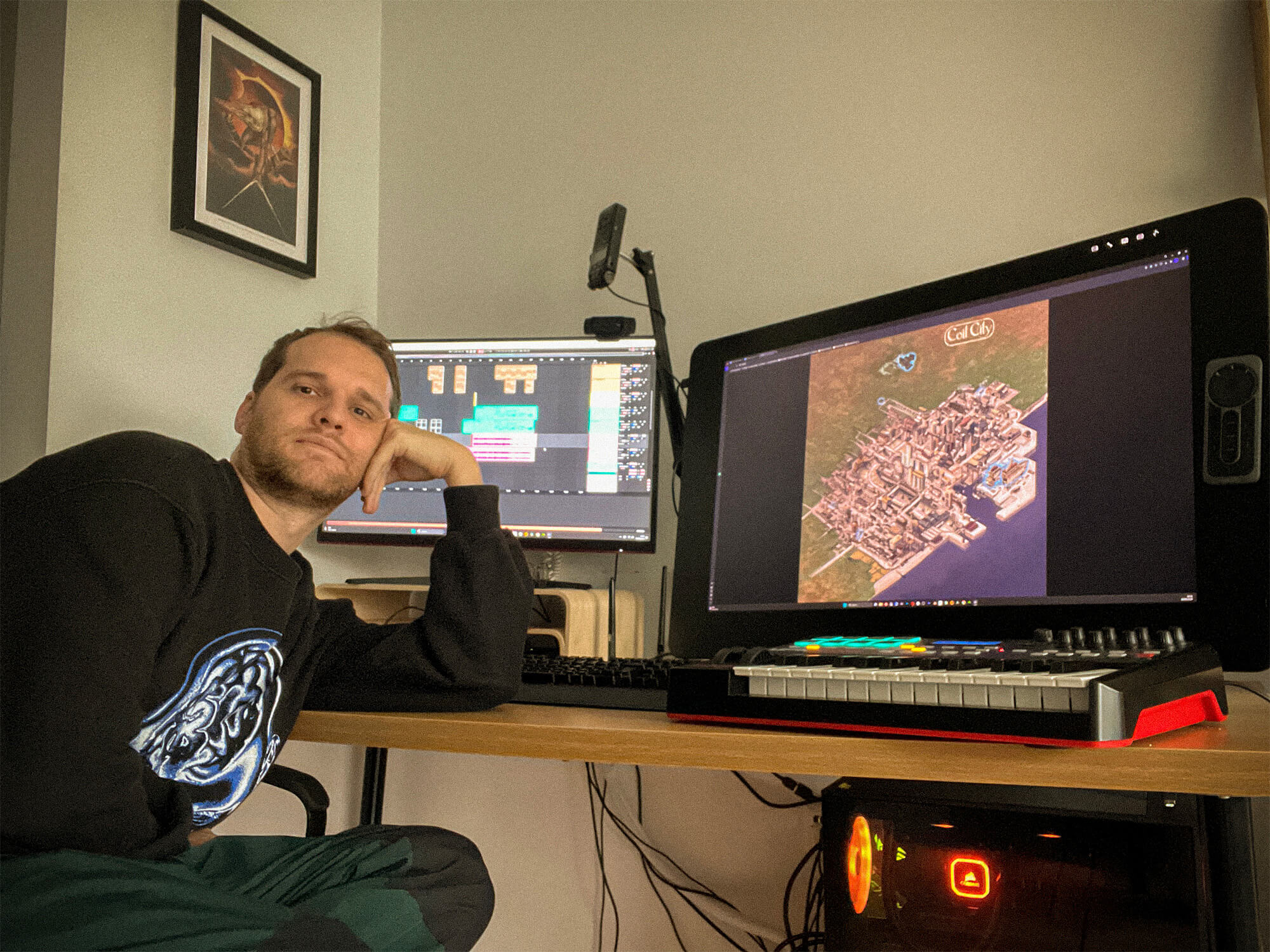
Murlo in his studio. Image: Murlo
Music producer, illustrator and sculptor Murlo makes music in Manchester, but his mind was far from any human world we know when he produced his second album, Puckle.
Driven intensely by a fictional sci-fi narrative, tracks on this album sound at times like UK grime if it was created in an alien bunker in the early 3000s, rather than Jammer’s basement in the early 2000s. Murlo draws further from any conventions in UK club music, falling into four-by-four territories that are by no means straightforward, boasting eerie vocal phrases, otherworldly samples and distinctly ‘Murlo’ synth parts.
In our chat with the artist – real name Chris Pell – we catch a lucky glimpse into the creative space of one of the most artistic producers out there right now. His space is full of strange home-made figurines, books on mythology and, not forgetting, a MIDI keyboard.
Hey, Murlo. You just came back from Korea. How was it?
Korea was great. I spend a lot of time visiting my partner who lives there. It’s become a second home for me, and I wrote half the music from my latest album there. I do find myself less distracted spending time in public spaces due to the language barrier; I can read Hangul, the Korean alphabet, but when it comes to speaking the language, I’ve got a long journey ahead of me.
In the UK, I find it a bit of a sensory overload to try and work in a cafe or public space, but as my Korean is very limited, I can tune out and find my thoughts a lot easier over there.
Tell us more about the rich narrative behind your second album, Puckle.
The world-building was a big part of the album, and the visual side of things, such as the sculptures, were an integral part of it. The story centred around a cult that lived in the forest on the outskirts of a city. They were enamoured by a god they discovered in the wells of an old bathhouse, which began changing their physical form, but it turns out it was actually a sentient AI that escaped from the city.
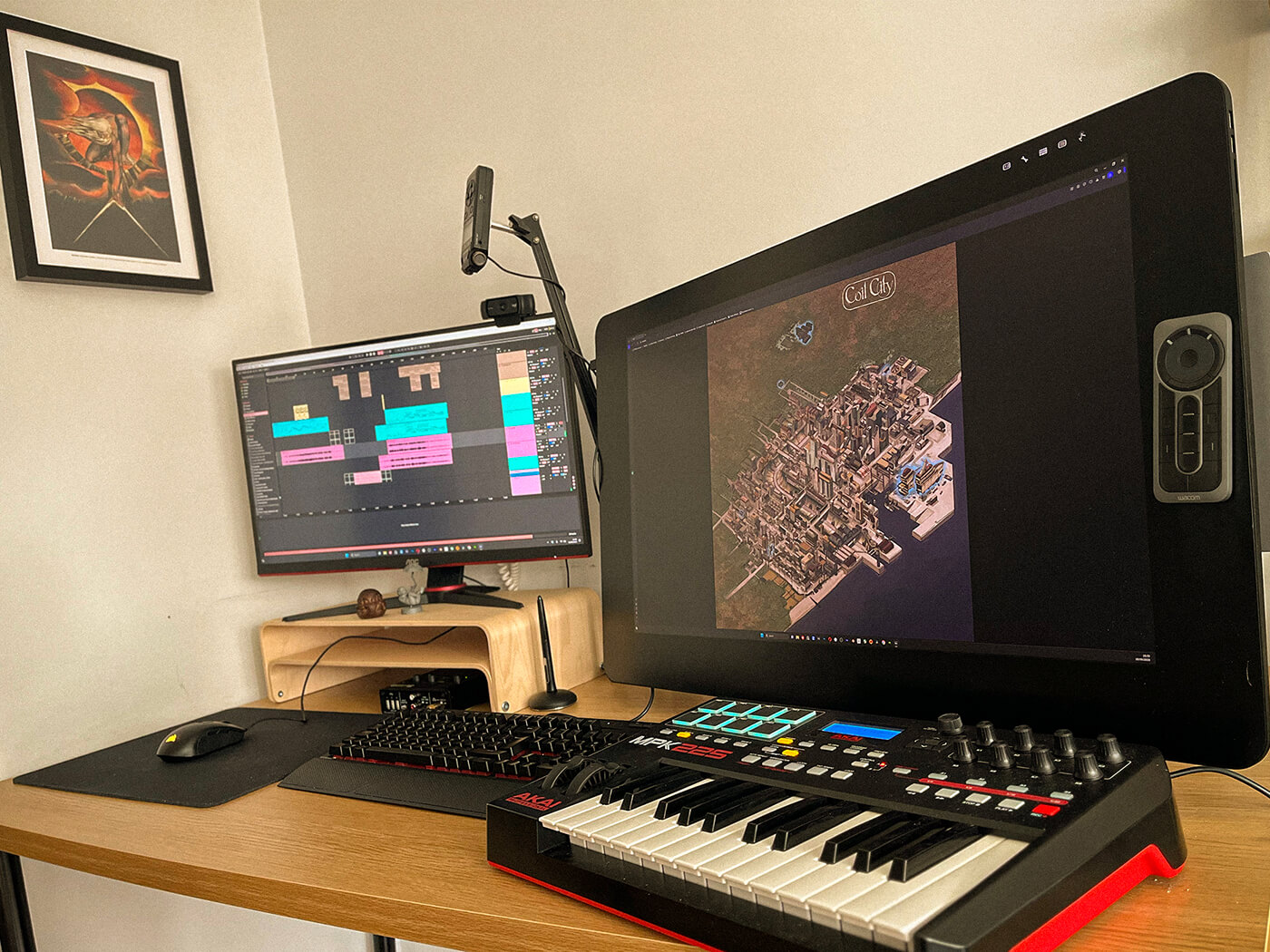
Does it add another layer to an album when you revolve it around a story and a world?
Yeah definitely. For me, it’s been a way of helping me push my music into directions away from these arbitrary rules I gave myself. Creating music for characters or moments from the story meant I wasn’t so hung up on the functionality of the music as it was much more expressive.
Tell us a bit about the studio.
My studio is in my flat in Manchester. I once tried having a dedicated music studio in 2016 when I used to live in London, but I realised I couldn’t afford it and it didn’t really gel with how I work. I’ve tried to instead integrate a studio around my daily life. I live alone, which helps a lot in that respect as I’m able to fully surround myself with things that help me write.
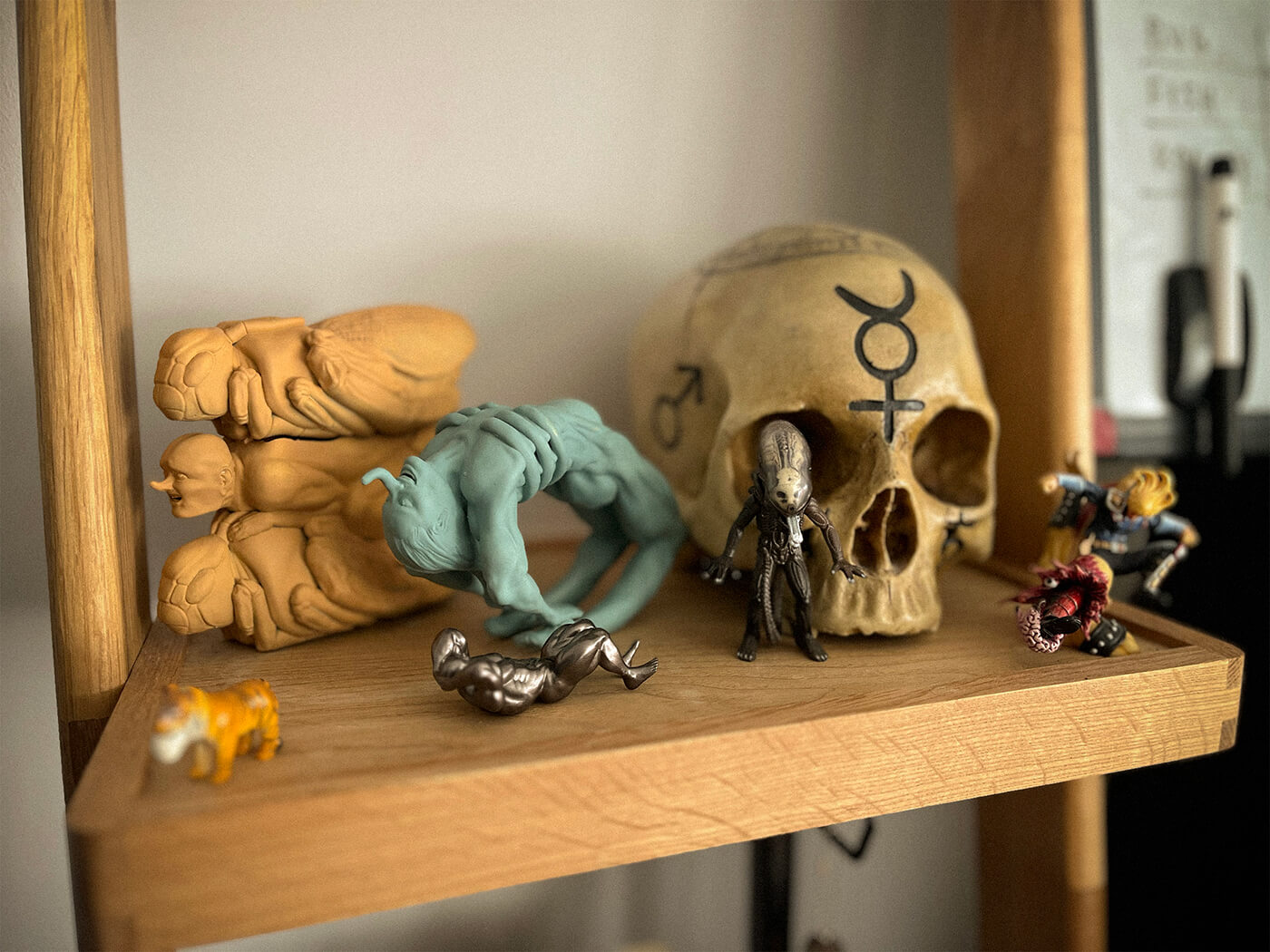
How do you use your studio?
Having a studio in my small flat has broken down the work/home life barrier. It’s not for everyone; I know people like to separate the two to have a healthy balance, but for me, they are now indistinguishable. I don’t view them as separate things. I actually find I’m most relaxed when I’m drawing or sculpting, so the idea that I would have a place away from home with all my gear would be detrimental to me.
What atmosphere do you try and create in the studio, and how does the studio environment help you with your creativity?
I like to be surrounded by things. I collect records, miniatures, books, and I like to have them at arm’s reach to my desk. Not only as references but also to help me give myself breaks to stare at when I hit a creative block.
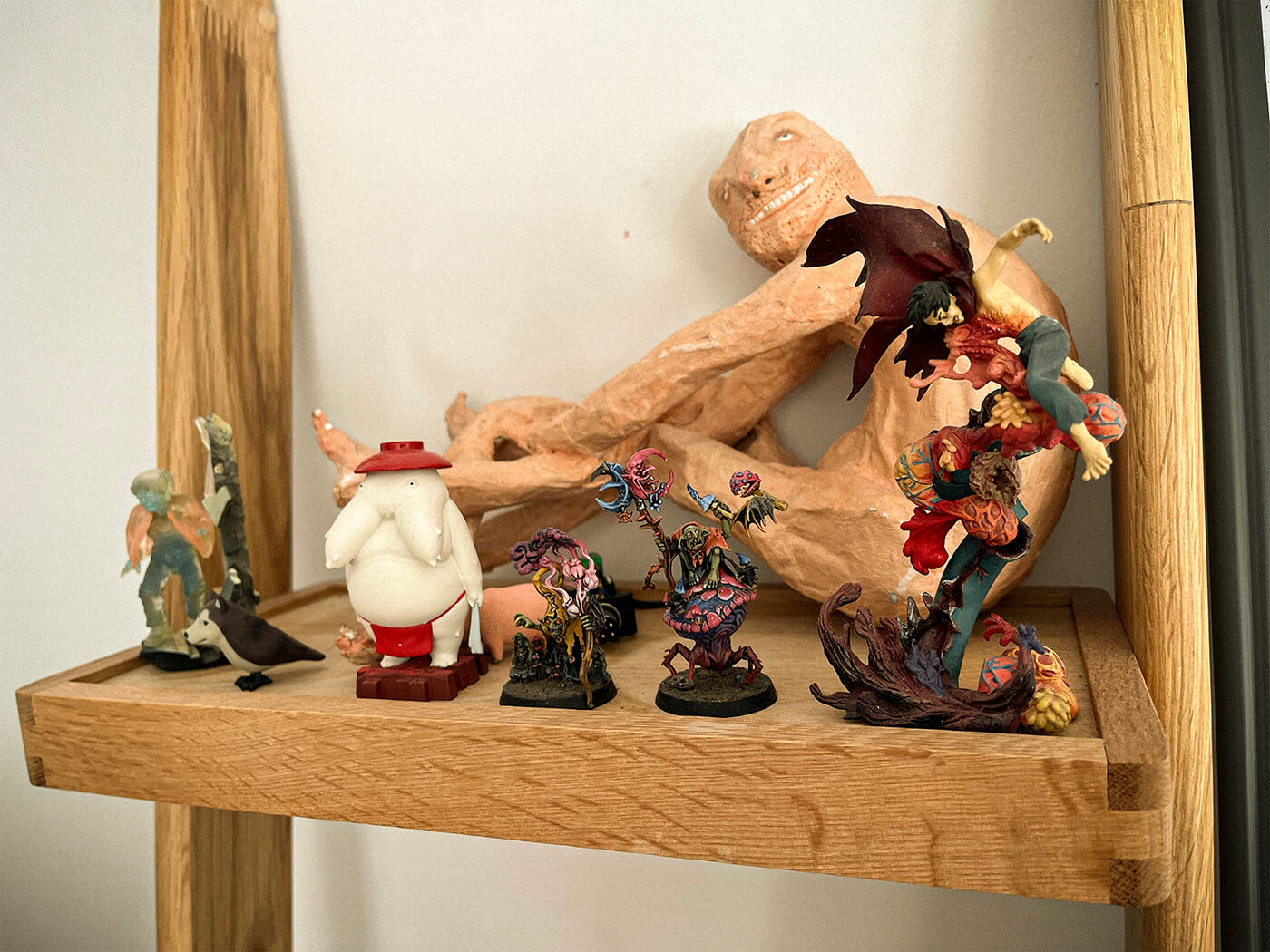
You’ve used vocals in an interesting way throughout this album…
From a purely musical point of view, I use voices like any other synth. I have a lot of layered sung chords mixed in with my other synths. From a narrative perspective, I used voices as a mark of the cult in the story, so they appear like chants or choral verses in the music.
Which DAW do you use?
Ableton Live. I’ve dabbled in other DAWs, but for how I work, I think Ableton is the best fit, and I’ve never really strayed from it. It’s great that you can choose to go a lot of different ways to achieve the same desired effect; it feels like a lot of musicians find their way of doing certain things in the program and it encourages people to experiment.
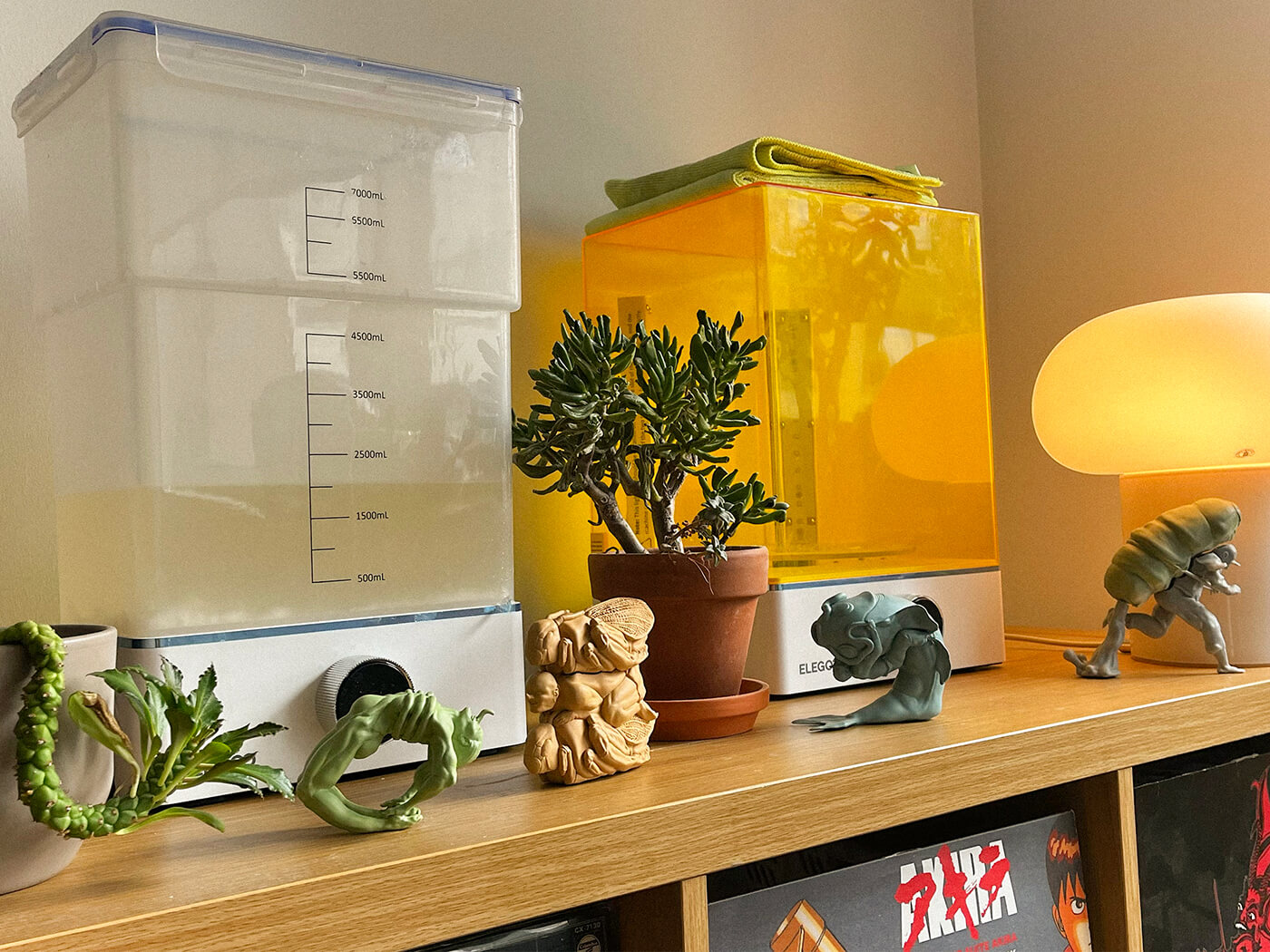
What is your favourite piece of gear and why?
I’m a very straightforward musician when it comes to hardware. Most of what I do relies on VSTs and software. The only physical kit I rely on is my Akai MPK225 controller. If I’m allowed to broaden the scope, I’d say my Wacom Cintiq tablet. For music production, I use it as a second monitor, but it’s absolutely integral to all the visual work I do alongside it.
What synth or effect can be heard the most on Puckle?
Some VSTs I used were Native Instruments’ Massive X, Pharlight, Straylight, and Errorsmith’s Razor, so a lot of Native Instruments stuff. For effects, I instantly go for Replika XT for any type of delay or reverb; it offers so much quickly. I also enjoyed using Output Portal a lot; it really helped me deconstruct melodies and drums when needed.
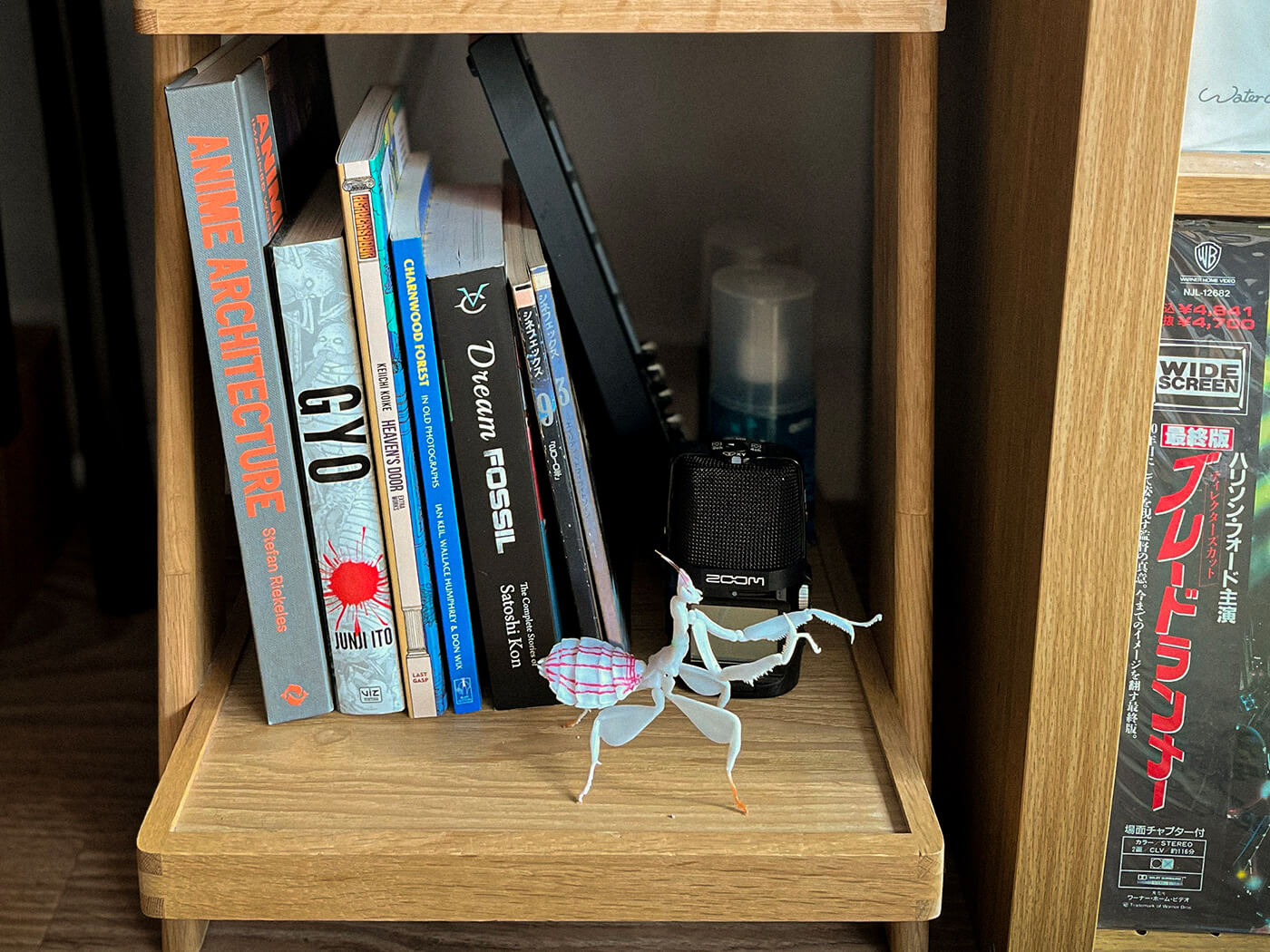
Your synth riffs are so precise and complex. It sounds almost like you’ve been trained in jazz piano.
Funnily enough, I’m not trained at all. I find chords I like, edit them, run them through arp VSTs like Xfer’s Cthulhu, and write melodies on top. It’s a fun process that helps me quickly develop ideas. After I’ve worked on something a bit further, I go back and look at the chords and do micro edits.
Early on, I used to be embarrassed, especially around people who studied music, but I know there are many people like me. I think all you need to do is train your ear and have personal taste in what you want to create.
What is your dream piece of gear?
I mentioned before that I never really use hardware, but I did once have the opportunity to write music on the Sequential Prophet 6 polysynth. It was incredible. That would be the one I get; I really enjoy working on sounds with sequencers, and I could play with it for hours.
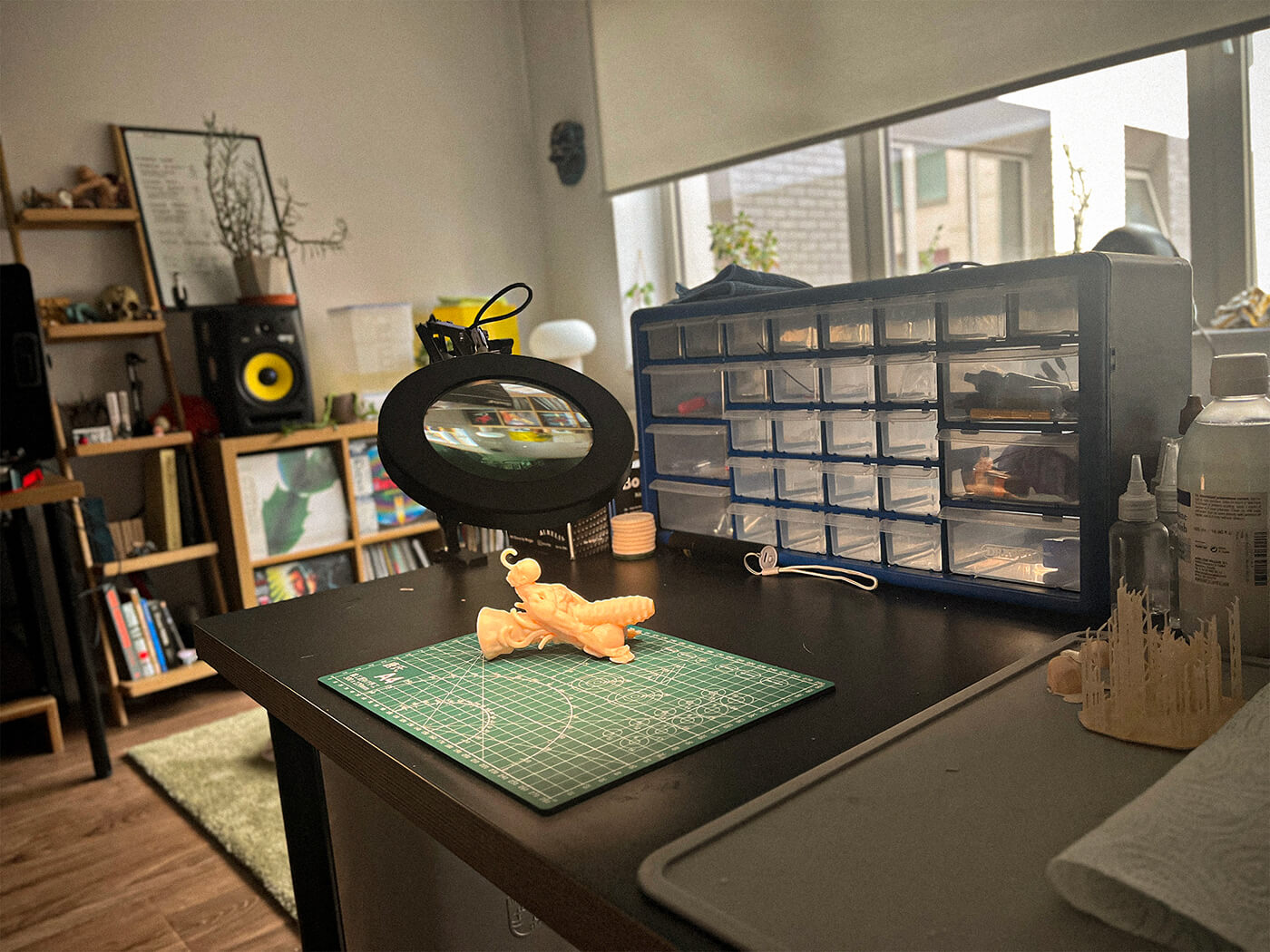
If you were left on a desert island, what one item would you take with you to make music with forever?
A field recorder and a bunch of batteries. I cannot sing at all, but there are a bunch of things in nature I can make sounds from.
What is your top piece of production advice?
Don’t let a purist approach stifle your ideas. YouTube tutorials are an amazing source of information but can give the impression that there is a wrong way and a right way to do something. Experiment, and if it works, it works; you can worry about mixing and mastering once the idea is there.
Enter the world of Murlo by heading to his Bandcamp.